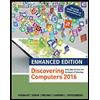O, D_NAME, QUALIFICATION, FS_PR_CL, PYMT_DU, ADDRESS, PH_NO) 5. PAT_ENTRY (PAT_NO, PAT_NAME, CHKUP_DT, PT_AGE, SEX, RFRG_CSTNT, DIAGNOSIS, RFD, ADDRESS, CITY, PH_NO, DEPARTMENT) 6. PAT_CHKUP (PAT_NO, DOC_NO, DIAGNOSIS, STATUS, TREATMENT) 7. PAT_ADMIT (PAT_NO, ADV_PYMT, MODE_PYMT, ROOM_NO, DEPTNAME, ADMTD_ON, COND_ON, INVSTGTN_DN, TRMT_SDT, ATTDNT_NM) 8. PAT_DIS (PAT_NO, TR_ADVS, TR_GVN, MEDICINES, PYMT_GV, DIS_ON) 9. PAT_REG (PAT_NO, DATE_VIS, CONDITION, TREATME
Relational
The relational database schema for Hospital Management database is as follows:
1. DEPARTMENT (D_NAME, D_LOCATION, FACILITIES)
2. ALL_DOCTORS (DOC_NO, DEPARTMENT)
3. DOC_REG(DOC_NO, D_NAME, QUALIFICATION, SALARY, EN_TIME, EX_TIME, ADDRESS,
PH_NO, DOJ)4. DOC_ON_CALL (DOC_NO, D_NAME, QUALIFICATION, FS_PR_CL, PYMT_DU, ADDRESS,
PH_NO)
5. PAT_ENTRY (PAT_NO, PAT_NAME, CHKUP_DT, PT_AGE, SEX, RFRG_CSTNT, DIAGNOSIS,
RFD, ADDRESS, CITY, PH_NO, DEPARTMENT)
6. PAT_CHKUP (PAT_NO, DOC_NO, DIAGNOSIS, STATUS, TREATMENT)
7. PAT_ADMIT (PAT_NO, ADV_PYMT, MODE_PYMT, ROOM_NO, DEPTNAME, ADMTD_ON,
COND_ON, INVSTGTN_DN, TRMT_SDT, ATTDNT_NM)
8. PAT_DIS (PAT_NO, TR_ADVS, TR_GVN, MEDICINES, PYMT_GV, DIS_ON)
9. PAT_REG (PAT_NO, DATE_VIS, CONDITION, TREATMENT, MEDICINES, DOC_NO, PAYMT)
10. PAT_OPR (PAT_NO, DATE_OPR, IN_COND, AFOP_COND, TY_OPERATION, MEDICINES,
DOC_NO, OPTH_NO, OTHER_SUG)
11. ROOM_DETAILS (ROOM_NO, TYPE, STATUS, RM_DL_CRG, OTHER_CRG)

Trending now
This is a popular solution!
Step by step
Solved in 2 steps








